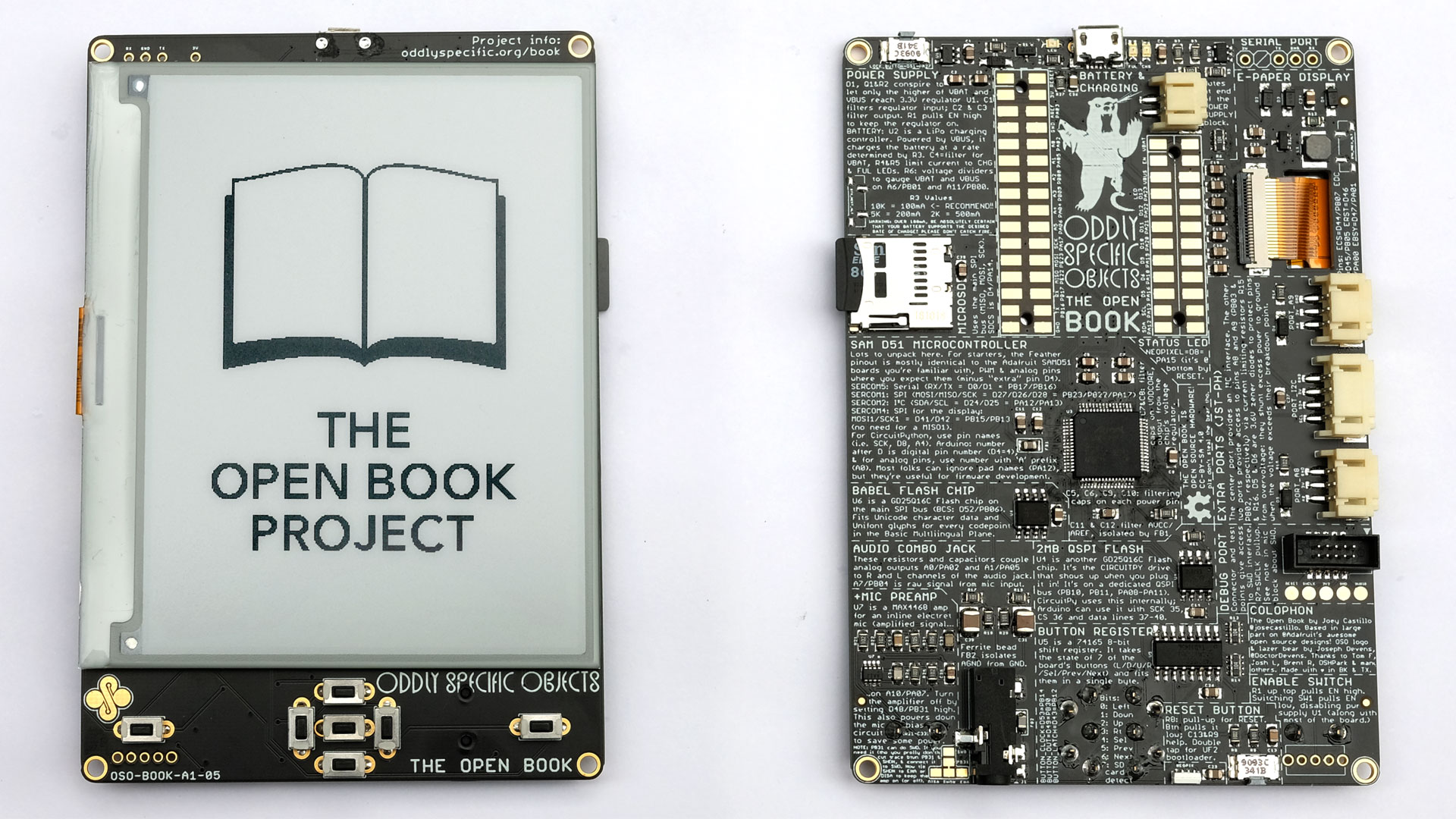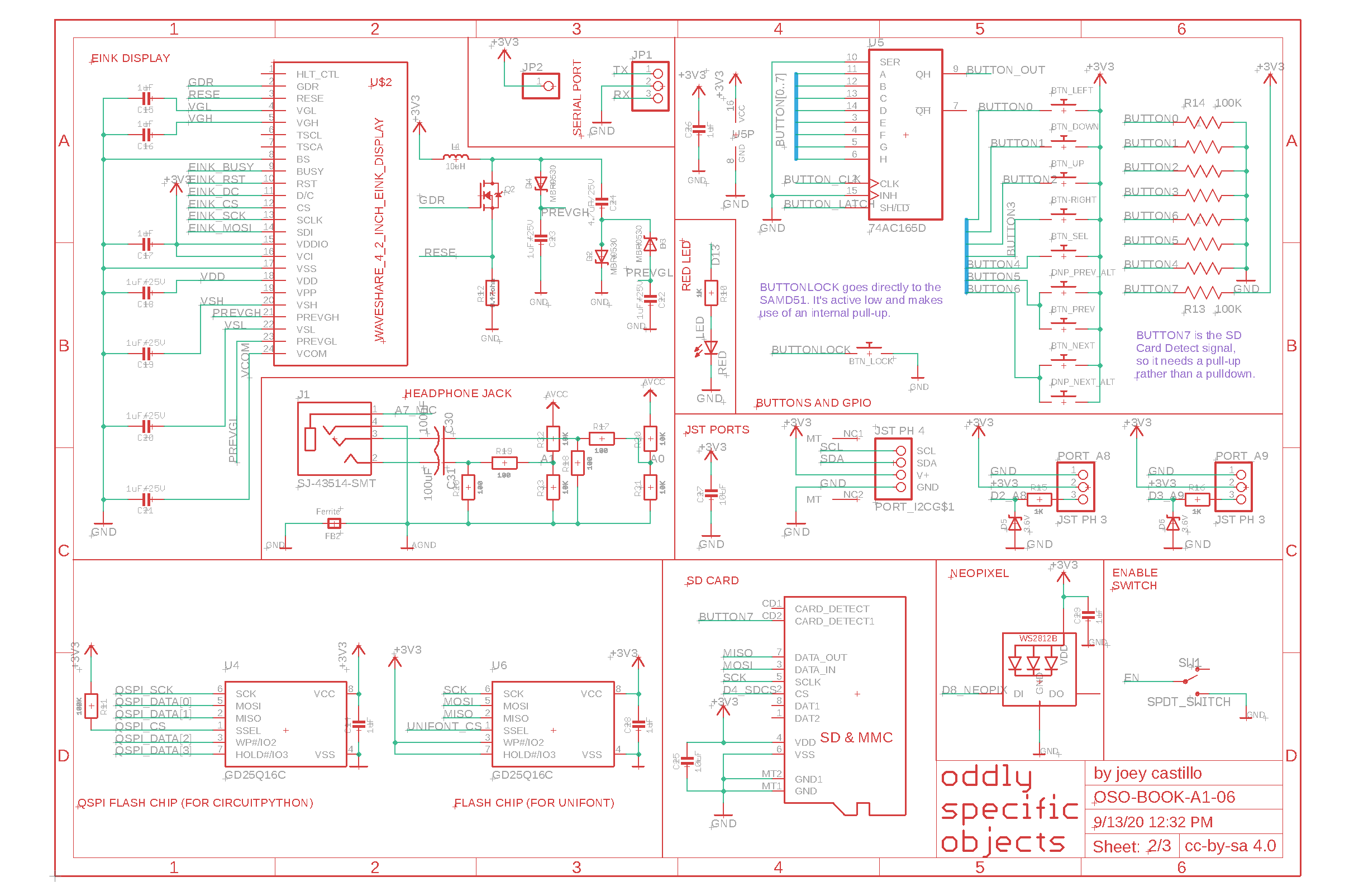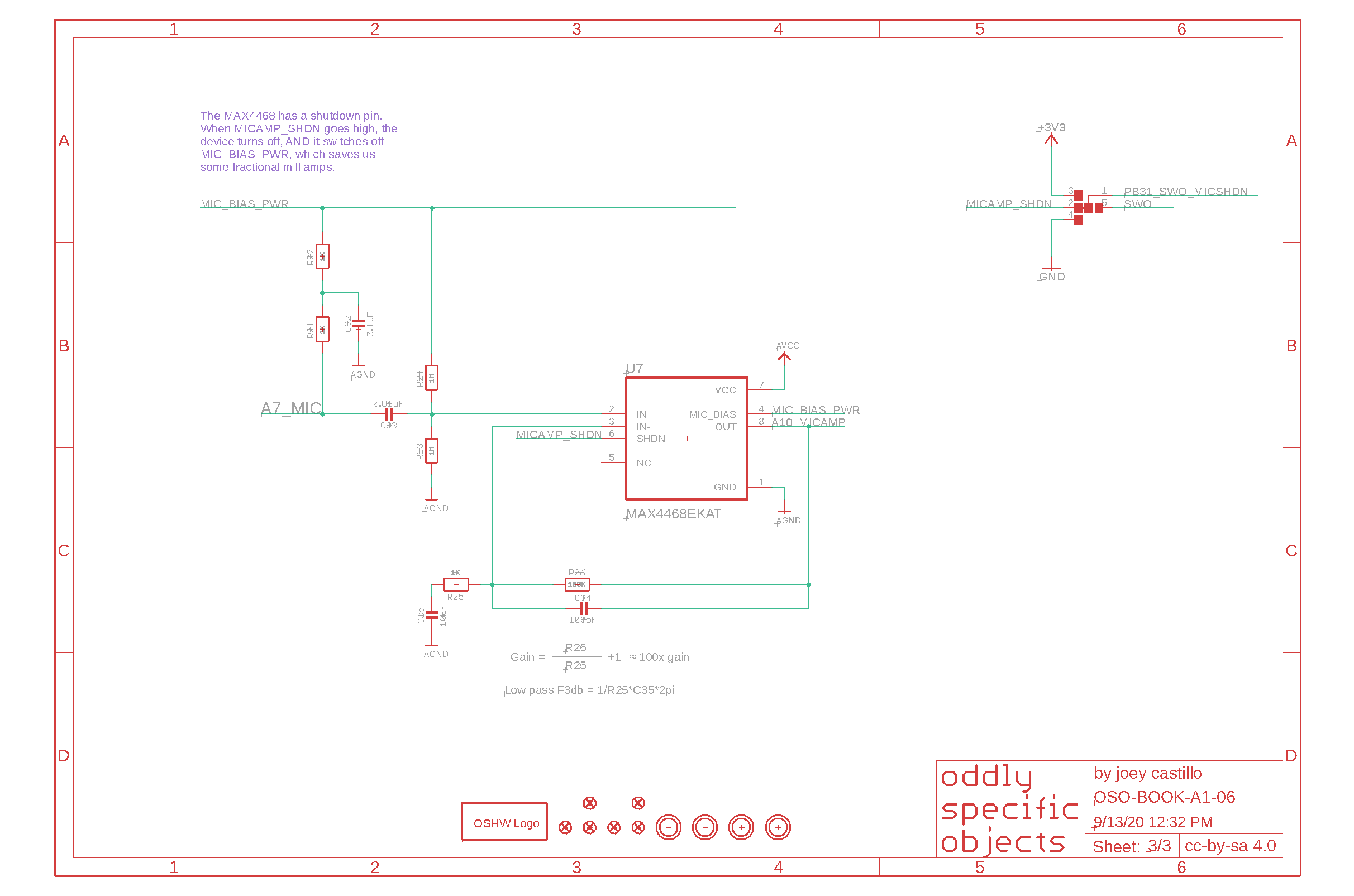
Developer Joey Castillo, author of the Open Book project, presented a set of elements, including hardware and software, from which you can assemble an e-book for yourself. All these elements, both software and components, are allowed to be modified for any purpose, since they are distributed under a free license.
The developer raised funds, which were enough for him to order 100 printed circuit boards. The Adafruit team took over the production of these boards, and after they were ready, they began to sell them at Digi-Key. The cost of the board is about $ 15, it comes with instructions for assembling an e-book - you can't do just a screwdriver, you need a soldering iron and at least a minimum soldering skill.
What is the project?
This section will focus on hardware. The core of the device is a Feather-compatible board that was developed using ideas from Adafruit PyBadge . In addition to the usual features like LiPo charging support, the board supports a wide range of peripherals. You can order the board here .
Main functions and characteristics:
- 4.2-inch display, electronic paper. Driven by a dedicated SPI bus.
- Control buttons.
- MicroSD card slot.
- LEDs to indicate charge, status, etc.
- 2MB chip and Neopixel with CircuitPython support
- Another 2MB language chip from Babel.
- Access to two digital or analog pins via STEMMA-compatible ports.
- Access to the I 2 C interface via the same port.
- Audio with stereo output and microphone input.
- Microphone amplifier.
The goal of the project, in general, is to enable users or companies to develop electronic readers to their liking, without proprietary elements or software. The basic functions are not bad, already on their basis you can create a decent "reader". But if desired, the design can be strengthened by adding functions and capabilities.
The board comes with technical documentation - the author promises to add a couple more manuals on various topics soon.
The development of the book is available even for those users who are not too familiar with the soldering process. Resistors and capacitors are 0805 or larger, so no microscope is needed for assembly. Mounting the loops and SAMD51 can be a bit tricky. But this is also solvable.
Alternative iron: Feather Wing
This e-book is another project of the author, it is somewhat simpler, its functions are limited by the capabilities of the Feather interfaces. But here, too, everything is not bad. Here's what the book offers:
- The display is the same size, controlled via the SPI bus.
- 8 buttons to control functions.
- Slot for microSD memory cards.
- 2 MB for multilingual support.
- Headphone out, not stereo, mono.

Why does the author need a second project? It originally served as the Proof-of-concept of the main idea. But then it turned out that users would like to use this board to create a book, since there is much less work with it than with the previous version. It has everything you would normally need - a reading screen, flash memory, language support, buttons, audio output and expansion ports. Yes, there is no microphone, but, firstly, it is usually not needed, and secondly, you can use a STEMMA-compatible microphone.
Scheme



A list of the components you need to create your book is available here . You can order them on the same Aliexpress or any other resource.
And here is a video of the book's assembly from the author with a detailed explanation of what each component does.
Below is the collected book and a demonstration of its capabilities.
List of useful links
- E-Book FeatherWing Fee on Tindie
- Open Book PCB board on Tindie
- E-Book Wing Assembly Manual (and assembly video )
- Assembly manual and technical documentation for Open Book
- Project page on Hackaday.io
The author on his page says that the demand for free devices and software is now very high. This is especially true for e-books, which provide access to knowledge and the world's literary treasury. Books are the most important cultural artifacts of our civilization, but, unfortunately, the most popular reading devices like the Kobo, Nook, Kindle are closed proprietary devices.
As mentioned above, Open Book is a project that is positioned as an opportunity to change this situation with closed systems and software. It allows you to create a book of any complexity for yourself or your clients. You can modify both hardware, but also software, expanding the already good capabilities of the device. And the device is also suitable for any country, thanks to its multilingual support.
